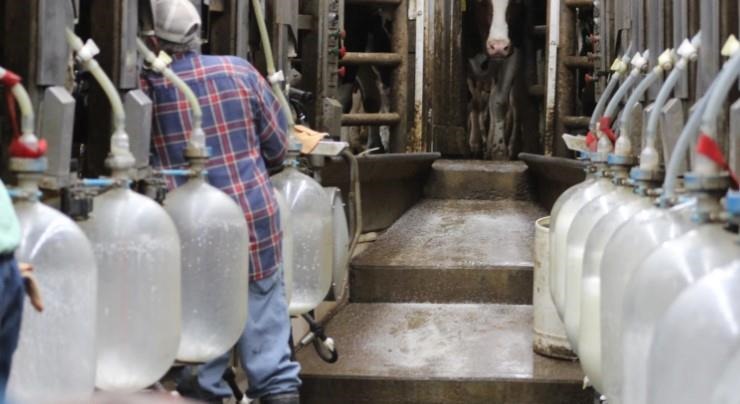By Dorivar Ruiz Diaz and Sandy Johnson
Drought-stressed crops such as corn and sorghum tend to accumulate high nitrate levels in the lower leaves and stalk of the plant (Figure 1). Nitrates accumulate in the lower portion of these plants when stresses reduce crop yields to less than expected, based on the supplied nitrogen fertility level. Nitrate toxicity in livestock is because of its absorption into the bloodstream and binding to hemoglobin, rendering it unable to carry oxygen throughout the body. The result is eventual asphyxiation and death.

Figure 1. Drought-stressed corn plants. Photo by Sandy Johnson, K-State Research and Extension.
Forage testing
It is wise for producers to test their drought-stricken forage prior to harvest. Levels of nitrates can increase in drought-stressed plants after a rain and delaying harvest may be beneficial. Nitrate testing can be done through several labs, including the K-State Soil Testing Laboratory. Harvesting the forage 6-to-12 inches above the ground to avoid the highest concentrations of nitrate in the plant is a good practice. Producers should collect a good representative forage sample above this cutting height to get an accurate determination of the nitrate concentration. Factors to consider in setting the harvest height would include actual nitrate concentration, storing and feeding methods and forage availability, Toxicity is related to the total amount of nitrate in the diet (including water) and how quickly it is eaten, but, generally, if forages contain more than 6,000 ppm nitrate, they should be considered potentially toxic (Table 1). Animals under physiological stress (sick, hungry, lactating, or pregnant) are more susceptible to nitrate toxicity than healthy animals.
Table 1. Level of forage nitrate (dry matter basis) and the potential effect on animals.
ppm Nitrate (NO3) | Effect on Animals |
0-3,000 | Virtually safe |
3,000-6,000 | Moderately safe in most situations; limit use for stressed animals to 50% of total ration. |
6,000-9,000 | Potentially toxic to cattle depending on the situation; should not be the only source of feed. |
9,000 and above | Dangerous to cattle and often will cause death. |
Management options
Depending on the planned feeding method, a producer may wish to harvest different parts of the plant. If wrapping the forage into a bale and feeding it directly to livestock, a producer may want to test the lowest part of the stalk to determine the greatest risk of nitrate forage that the animal could ingest. If a producer was planning on grinding the bale, a whole-plant sample above what will be left in the field may be a more accurate representation of what will be eaten. If a harvested forage is high in nitrate, grinding and mixing the feed with another forage such as prairie hay or brome will dilute the total nitrates in the animal’s diet and could potentially reduce the risk of poisoning.
High-nitrate forages chopped for silage and properly ensiled are a safer option for livestock feeding. During the ensile process, potentially 50 percent of the nitrates in the forage will be metabolized by the microbes and can vastly reduce the risk of poisoning. It is still not a bad idea to leave 6 inches of stubble in the field. That is the portion of the stem with the highest concentration of nitrates.
Grazing high nitrate forages can be a dangerous practice. Grazing pressure should be limited so that animals do not consume the parts of the plant forage testing showed to be dangerous. Although animals tend to consume the leaves and the top portions of the plant, which contain less nitrates, the risk of consuming a high-nitrate portion of the plant still exists. In addition, the longer the animal is left on a field and the more that animal is forced to eat the remaining forage at the lower portions of the plant, the greater risk of nitrate poisoning.
Source : ksu.edu